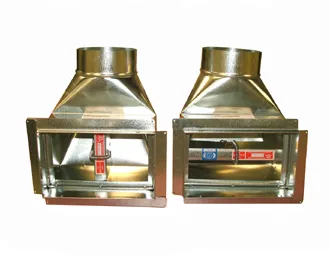Overview
Aire Technologies has been approached by industry partners regarding a dynamically rated ceiling radiation damper that has recently emerged. We wanted to take this opportunity to dispel misinformation being propagated about dynamically rated UL floor-ceiling assemblies and specifically those CRD’s that are claimed acceptable in all wood-truss assemblies. Keep in mind that the greatest means of success is fully understand building codes, fire ratings, local jurisdictions and most importantly UL263 wood truss assembly ratings. This original news article can be found at https://airetechnologies.com/dynamic-crds-debunked/
Popular Questions
1. DYNAMIC CEILING RADIATION DAMPERS ARE REQUIRED IN DYNAMIC HVAC SYSTEMS
a. TRUE. IBC 2015 requires that ceiling radiation dampers that are used in dynamic wood truss systems must be rated for dynamic systems AND dynamic fire-resistance-rated assemblies.
2. IBC 2015 REQUIRES ALL CEILING RADIATION DAMPERS TO BE DYNAMICALLY RATED BY AN NRTL.
a. FALSE. IBC differentiates between static and dynamic ceiling radiation dampers but does not require one or the other on all projects. Dynamic dampers must be used in dynamic systems. Static dampers must be used in static systems. “Ceiling radiation dampers shall comply with the requirements of UL 555C or shall be tested as part of a fire-resistance-rated floor/ceiling or roof/ceiling assembly in accordance with ASTM E119 or UL 263. Only ceiling radiation dampers labeled for use in dynamic systems shall be installed in heating, ventilation and air-conditioning systems designed to operate with fans on during a fire.” (IBC 2015 717.3.1 item 4).
3. A DYNAMIC CEILING RADIATION DAMPER CAN BE USED IN ANY FLOOR-CEILING OR ROOF-CEILING TRUSS ASSEMBLY.
a. FALSE. Static assemblies are evaluated differently than dynamic assemblies and are not interchangeable. According to UL, “…the certified ceiling damper must be directly referenced in the floor-ceiling and/or roof-ceiling design, by manufacturer and model number, in order to be used in that design. Only the dampers specified in the design may be utilized.” (UL.com. CABS.Guideinfo, 2020).
4. CEILING RADIATION DAMPERS LISTED BY UL CAN BE USED IN ANY WOOD TRUSS ASSEMBLY.
a. FALSE. Assemblies specify which dampers are compatible with the assembly. “Ceiling radiation dampers shall be installed in accordance with the details listed in the fire-resistance-rated assembly and the manufacturer’s instructions and the listing.” (IBC 2018 717.6.2.1).
5. A DYNAMIC CRD CAN BE USED IN A STATIC FLOOR-CEILING ASSEMBLY LIKE L-521 AND L-587.
a. FALSE. A dynamic ceiling radiation damper can only be used in a dynamic assembly, unless also tested in a specific static assembly. Assemblies tested with dynamic ceiling radiation dampers are considered holistically to be dynamic assemblies. A dynamic assembly will state, “Ratings were developed under conditions employing air movement within a dynamic system.” (UL Product iQ, 2020).
6. A DYNAMIC CRD CAN BE USED IN A STATIC HVAC SYSTEM.
a. FALSE. A dynamic CRD cannot be used in a static HVAC system unless specifically listed by an NRTL (UL) for use in a static HVAC system on the UL Product iQ listing service. The testing procedure is different between a static assembly and a dynamic assembly, and the testing procedures are not comparable.
7. A DYNAMIC CRD CAN BE USED IN A ROOF-CEILING ASSEMBLY.
a. FALSE. At the time of this writing, there are no tested and listed dynamic wood truss roof-ceiling assemblies, or any roof-ceiling assemblies with dynamically rated CRD’s. All roof-ceiling assemblies at the time of this writing employ static dampers.
8. DYNAMIC CEILING RADIATION DAMPERS ARE THE MOST COST-EFFECTIVE SOLUTION TO BUILDING LIFE SAFETY PLANS.
a. SPECULATIVE. Dynamic CRD’s are estimated to be approximately 30% more costly per damper than corresponding static CRD’s. The cost of the project also depends on which products are listed in the fire resistance-rated assembly (e.g. gypsum board, insulation, resilient channel, dampers). With limited options in an existing dynamic floor-ceiling assembly, the potential for a higher overall cost increases. A cost-effective alternative is to make the system static with a firestat.
9. DYNAMIC CEILING RADIATION DAMPERS ARE THE ONLY CODE-COMPLIANT SOLUTION TO MODERN MULTI-FAMILY LIFE SAFETY PLANS.
a. FALSE. Systems are made static by the proper wiring of a firestat HVAC limit switch and/or smoke detector to the local HVAC fan that triggers it to shut off upon firestat operation. Most fans are required to have a smoke detector nearby. Static ceiling radiation dampers are intended for use in systems with an HVAC limit switch wired to the fans.
Summary
Dynamic Ceiling Radiation dampers should not be considered in isolation for evaluation, specification, or approval. All relevant factors of multi-family wood truss construction and specification should be considered. What is the design rating that has been specified? Keep in mind that dynamic ceiling radiation dampers cannot be used in a static floor-ceiling assembly nor can a static ceiling radiation damper be used in a dynamic floor-ceiling assembly.
Beyond the actual price increase of a dynamic CRD over a standard static CRD, there is the increased cost of the fabrication and installation associated with a dynamic floor-ceiling system. Fabrication of a steel plenum (box) enclosure for every dynamic CRD and R-11 (required) wrap for every enclosure. Also, every CRD in the system must be dynamic – not just the one over the air handler. Therefore, that cost is then multiplied by the total number of dampers per unit.
A typical firestat installed within close proximity of the air handler in each unit will be a substantial cost-effective alternative, allowing faster completion and practical acceptance for critical life safety installations.

